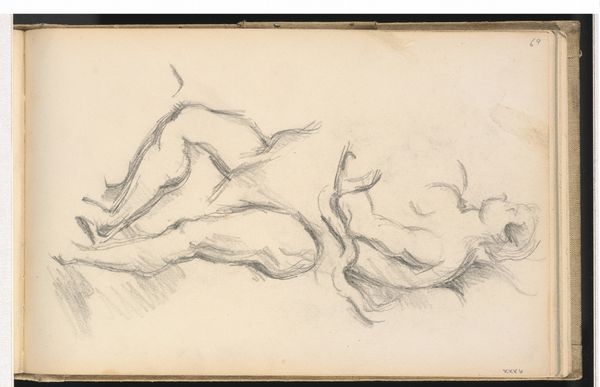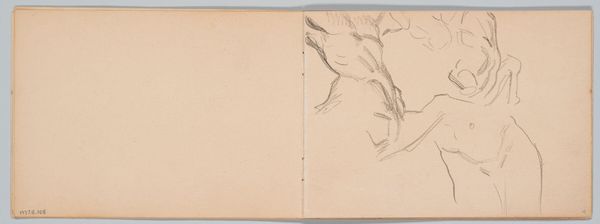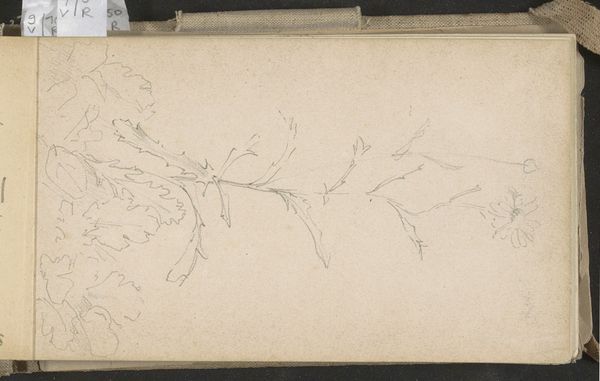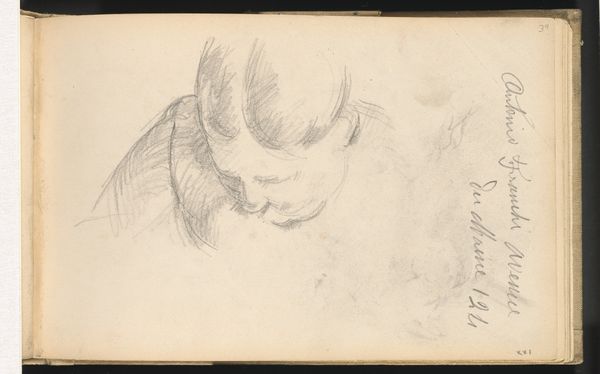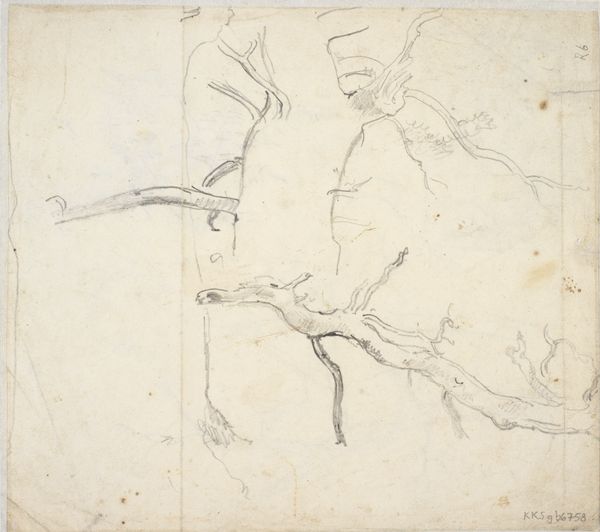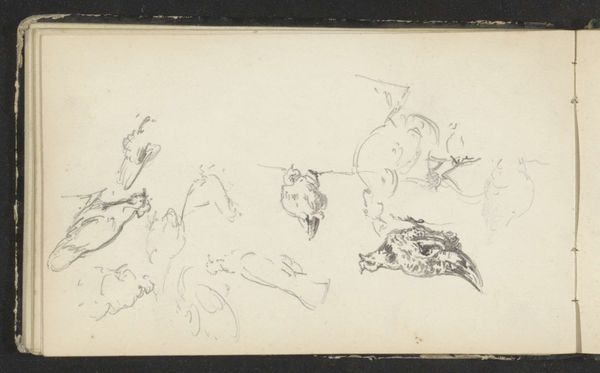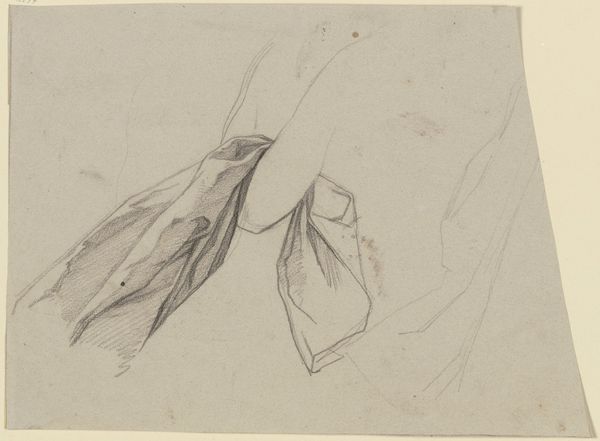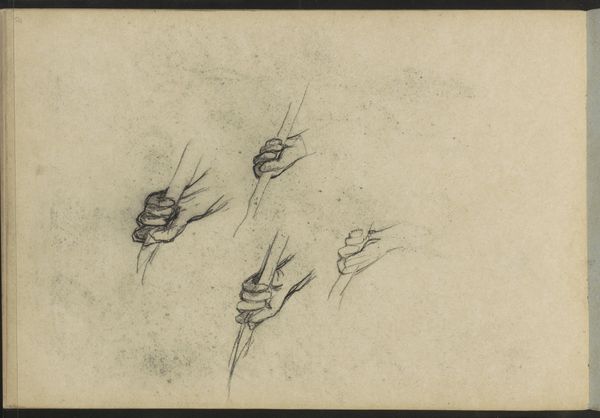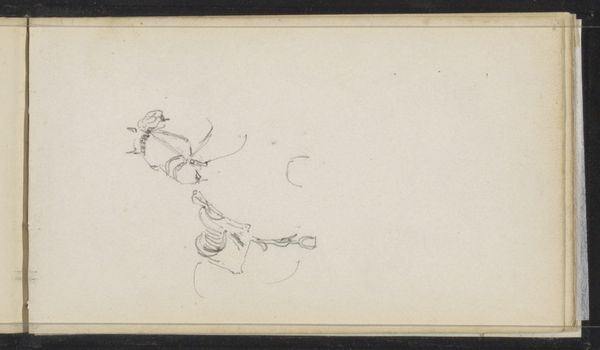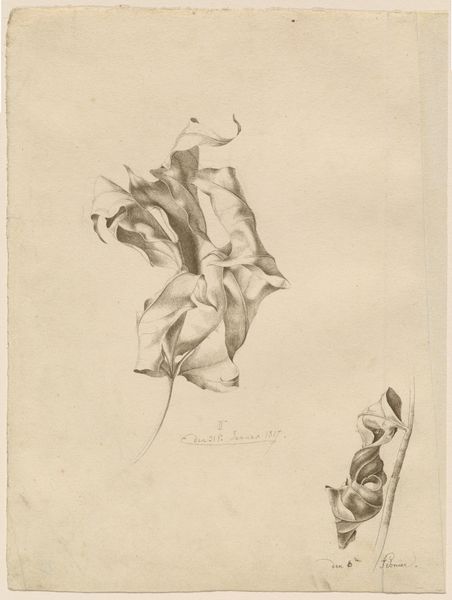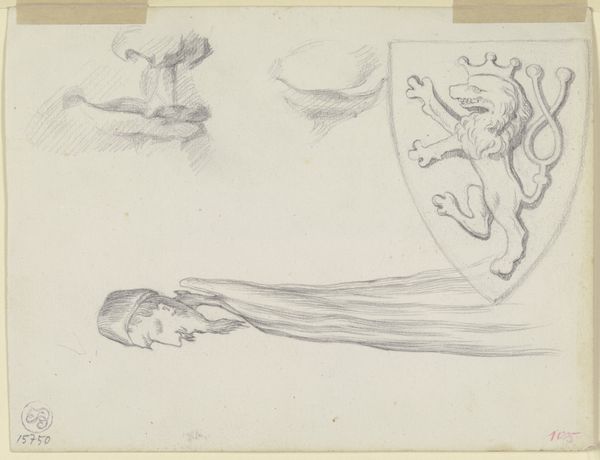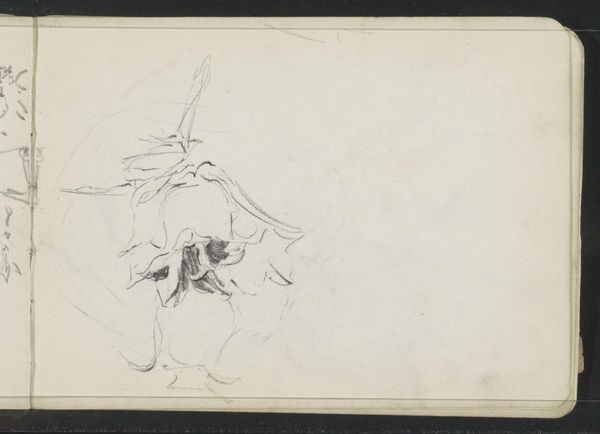
Study of the Allegorical Figure France in Rubens' "The Exchange of the Two Princesses" 1882 - 1885
0:00
0:00
drawing, paper, pencil
#
portrait
#
drawing
#
figuration
#
paper
#
pencil
#
post-impressionism
Dimensions: overall: 23.7 x 15.2 cm (9 5/16 x 6 in.)
Copyright: National Gallery of Art: CC0 1.0
Editor: So this is Paul Cezanne’s "Study of the Allegorical Figure France in Rubens' 'The Exchange of the Two Princesses'," a pencil drawing on paper from somewhere between 1882 and 1885. I am struck by how unfinished it looks, yet so full of energy. What do you see when you look at this sketch? Curator: Well, considering this from a materialist point of view, it is not necessarily unfinished, but reveals the means of its production. Notice the visible marks, the texture of the paper, and the pressure applied by the pencil – each decision unveils Cezanne's process. We can almost feel the labor of his hand translating Rubens onto the page. Think about why Cezanne, at this point in history, might labor over a copy of Rubens in pencil? Editor: He’s trying to master form, right? But you are suggesting it is not *just* that? Curator: Exactly. What were the means of accessing and consuming art at this time? Cezanne engaged with the masters through reproduction, through a mechanical, even industrial process in itself – think about the mass availability of drawings. This simple study reveals the layered processes of art making, consumption, and the complex relationship artists had with their predecessors. Where do you see evidence of that relationship here? Editor: I guess the lines are so much sketchier, less idealized. Cezanne's really breaking down the form into something he can understand and then rebuild. He’s using Rubens, but transforming it in the process, so it becomes something entirely new and modern. Curator: Precisely. The act of copying, the *material* trace of that act, speaks to the artist's engagement with tradition. By choosing pencil and paper, Cezanne democratizes the grand baroque style, transforming it into something accessible, personal, and reflective of his own time. What does this reveal about the value of the 'original' versus the copy, the master versus the student? Editor: I see how understanding the material and process opens up entirely new ways to appreciate this seemingly simple drawing! I had never thought about the economic context of artistic study before. Thanks!
Comments
No comments
Be the first to comment and join the conversation on the ultimate creative platform.
